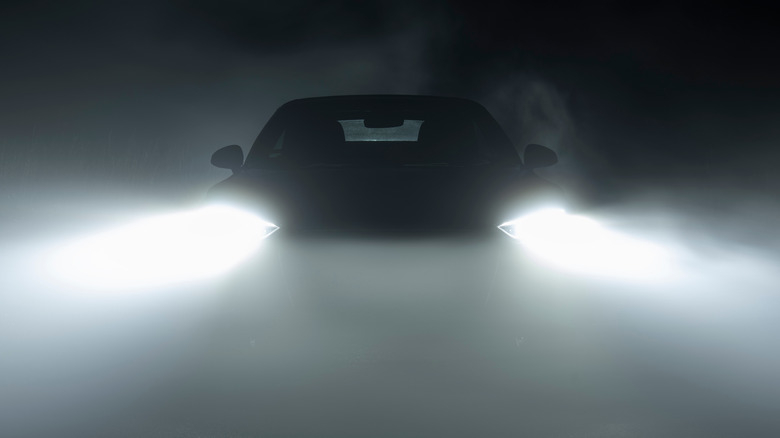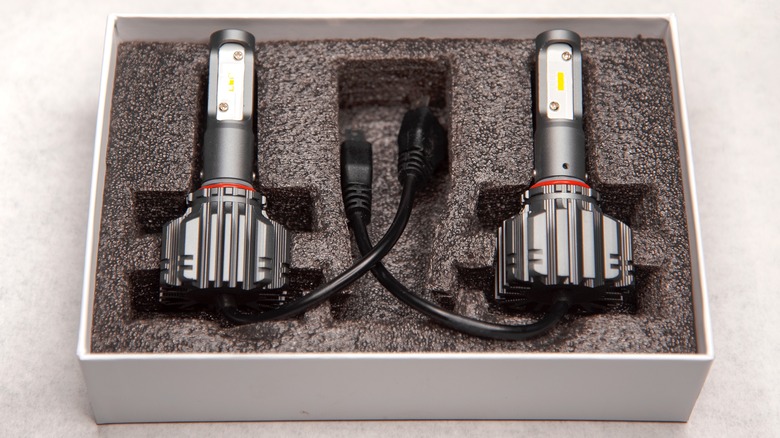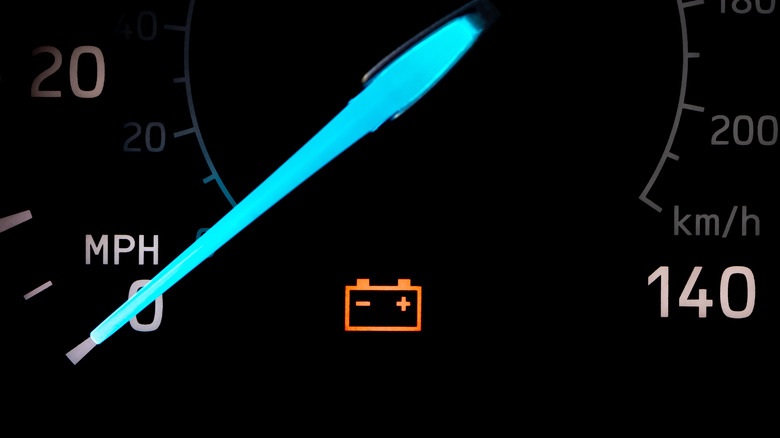What It Means If Your LED Lights Are Flickering On Your Car
Vehicles used to rely on halogen bulbs for headlights, but the industry has largely switched over to light emitting diode (LED) technology for many new cars. In fact, LEDs were equipped on approximately 40% of highway vehicles in 2021, according to Grand View Research. LEDs offer some advantages over halogen bulbs such as efficiency, brightness, and they don't get as hot during operation. This shift in technology accounts for why modern headlights are so bright, but also why that might change with some motorists claiming the intensity is blinding. While most new vehicles come with LED headlights, those that don't can still be swapped out for the newer technology by using a conversion kit.
But what's going on if your LED lights start flickering? While car models vary, there are a few reasons why you might notice this flickering behavior. Since LEDs don't like varying amounts of electrical current, your vehicle's power may not be providing the proper amount of consistent energy, causing flickering. Your car battery might also need to be replaced or it could be an indication your alternator is on its deathbed.
LEDs do not like inconsistent or low electrical current
One advantage halogen has over LED is that it can tolerate changes in current without disrupting performance. LED, on the other hand, is a bit touchier when electricity levels fluctuate, causing the lights to pulse or flicker. If you replaced your halogen headlights with an LED kit and notice them blinking in and out, you might want to try installing a pulse width modulation (PWM) connecter. This module will manage fluctuating current coming in and help deliver more level energy into the LEDs. These PWM wire kits are available for around $50 and some of them include the ability to dim the lights as well.
To conserve power and run more efficiently, some vehicles with daytime running lights (DRL) are already equipped with a PWM. If you plug in your aftermarket LEDs into a system where they share energy with the DRLs, you might experience intermittent blinking. You might want to consider a CANBus adapter with resister that can regulate and steady the voltage between the power source and LEDs to prevent flickering. These adaptors are available for as little as $16 and sold by major online retailers.
Low battery and alternator issues can cause flickering LEDs
Another potential cause of LED flickering can stem from a battery that's not holding enough of a charge and needs to be replaced. If you notice your headlights aren't staying consistently lit, it could be they aren't getting the energy they need from the battery. Car batteries can last up to five years but should be inspected routinely to verify their condition. Flickering headlights is more than just a nuisance, it could be a dangerous distraction on the road. If you need a new battery, there are several major car battery brands and we've ranked them from worst to best.
The alternator, the component that charges the battery and has a direct effect on your car's electrical system, could also be the culprit behind flickering LEDs. Alternators do fail and one sure sign you need to replace it is if you notice the battery icon light up on your vehicle's instrument cluster. This warning light usually means the battery isn't getting a proper charge and won't have enough power for your car's electrical needs. In addition to the battery warning light, there are a few ways to tell if your car's alternator is bad.


